This was published 2 years ago
Who will win this year’s Archibald Prize? A critic shares his bet
It’s usually easy to spot the winner within five minutes - not this time.
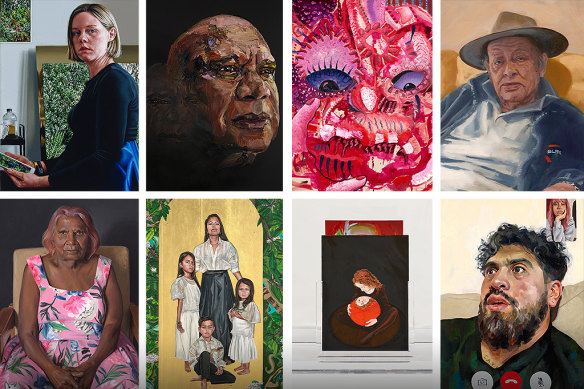
There are 57 finalists in this year’s Archibald Prize.
Of all the Archibald Prizes I’ve seen and reviewed, this year’s version is the most difficult to pick. It’s usually easy to spot the winner within five minutes – even when, as is often the case, it may not be the best picture. This year I confess myself bamboozled. One feels a certain sympathy for the judges, although it’s a problem of their own making.
The other noteworthy aspect of this year’s Archibald is how lacklustre it feels with the build-up more subdued than usual. In the past, a large part of the Archibald’s appeal has been due to constant undertones of controversy. The largest explosion came with the court case over the 1943 winner, William Dobell’s Mr. Joshua Smith, but there have been regular minor tempests keeping public interest on the boil while the show has evolved into a national institution. Visitors from overseas are often amazed at the attention the Archibald receives, let alone the amount of prize money.
Our affection for art prizes – particularly portrait prizes – is one of the peculiarities of the Australian psyche. The Archibald guarantees a sudden leap on the seismograph of public interest in the visual arts, but this year the spike feels a bit smaller than usual.
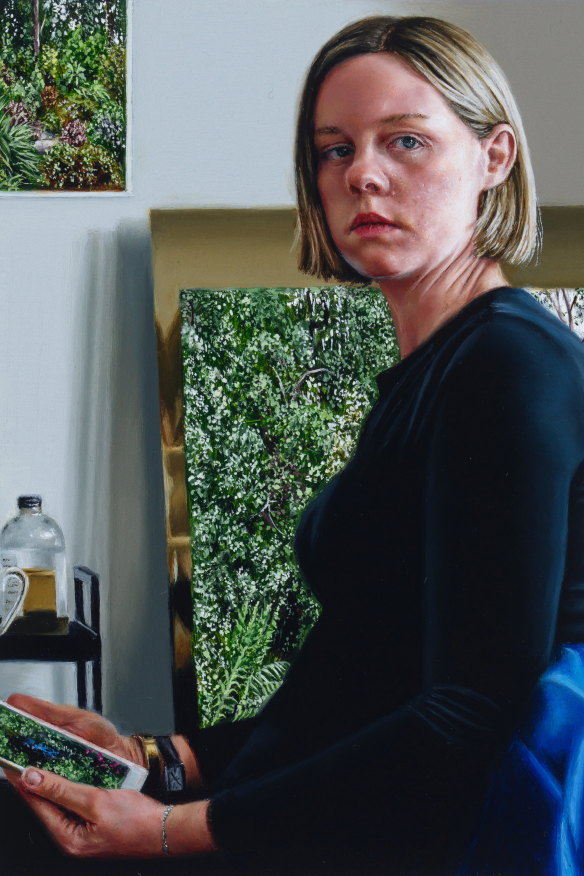
Natasha Bieniek’s Self-portrait, after Nora Heysen.
Nowadays, all that juicy controversy has been replaced with an increasing reliance on statistics and gimmicks. This year the big news is that there are more women finalists than men – 30 to 27, and more Indigenous artists than ever: 38, spread across the Archibald, Wynne and Sulman. These stats may be a source of self-congratulation for the gallery, but they mean nothing to most visitors. Meanwhile, supplementary events such as the Packing Room Prize and the Young Archies, are being taken more seriously than they deserve.
The 2023 finalists are divided between works that are a little too gimmicky, and those that are good, but too dull to be a winner. The trustees have to choose between whatever they honestly feel to be the best painting or whatever fulfils their favourite ideological agenda. The openness of the field means that smaller works have a better chance than usual.
If the trustees were prepared to go mini rather than maxi, they might incline towards Natasha Bieniek, a finalist on multiple occasions. This time she is showing a tiny, immaculate Self-portrait, after Nora Heysen. It’s no better or worse than most of Bieniek’s previous entries, so it would be a reward for consistency rather than for an outstanding entry.
Another notable small work is Natasha Walsh’s Dear Ben, ‘The Scream’ (after Pope Innocent X), which is almost too tricky for its own good, being a small panel painted on both sides, with the verso revealed in a mirror. It’s an attempt to capture both inner and outer worlds in a visual “letter” to Ben Quilty, with nods to Edvard Munch and Francis Bacon. If I don’t fancy Walsh’s chances, it’s because the piece would require far too much explanation.
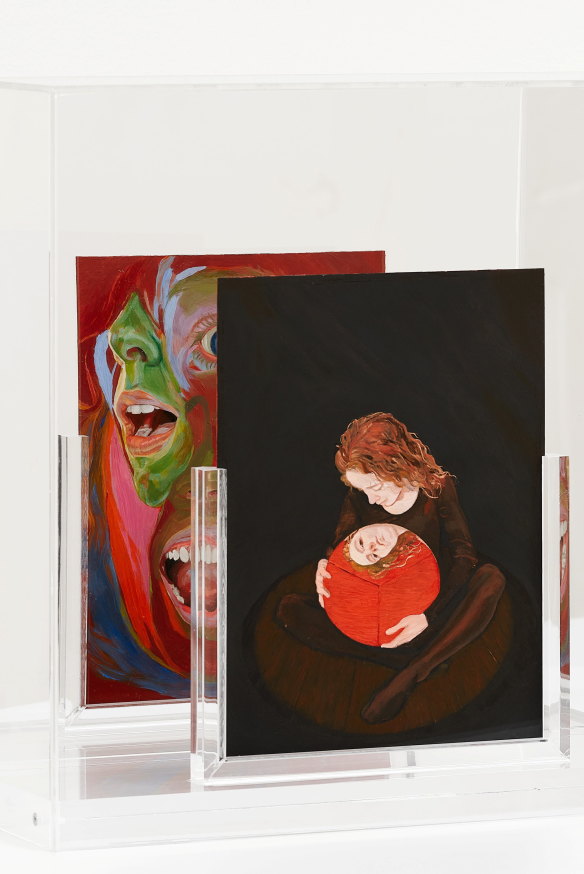
Natasha Walsh’s self-portrait Dear Ben, ‘The scream’ (after Pope Innocent X).
A final wee picture is Sarah McCloskey’s Social Distancing, a portrait of writer Omar Musa. The twist this time is that Musa is captured as if on the screen of a mobile phone, with the artist’s self-portrait in the top right-hand corner. It’s probably the Archibald’s first FaceTime portrait, which might render it ineligible if the artist didn’t assure us that she also spent time with the sitter in corporeal rather than virtual form.
This year there is a high percentage of portraits that, in the jargon of the 1960s, might be described as “square”. Drawing on no less an authority than Mary Quant, one learns that “the square cannot be bothered to keep up with the changing trends of fashion. She is a little low on nerve.” Or inclination, one might add.
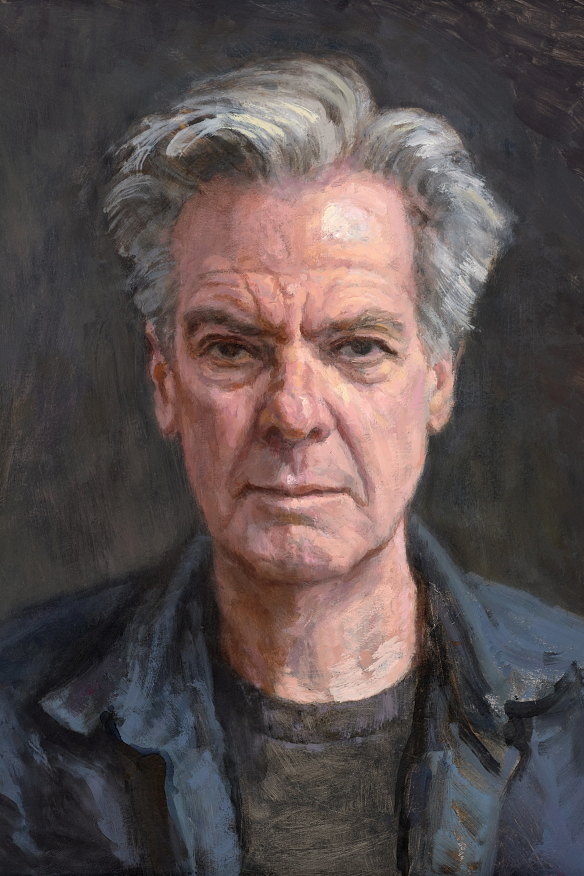
Michelle Hiscock’s portrait of Don Walker titled The Songwriter.
The squares in this show include Keith Burt’s Sam Leach in his Studio Chair, David Fenoglio’s Christopher Bassi, Tsering Hannaford’s Nanna Mara, Michelle Hiscock’s The Songwriter, Marie Mansfield’s Ronni Kahn AO, Paul Newton’s Portrait of John Symond AM, and Patrice Wills’ No Place Like Home.
I’m thinking, specifically, of works that have no pretensions beyond capturing an excellent likeness of the sitter. The backgrounds are generally neutral, there is no attempt to make a figure look exotic or heroic. The artist directs us back to the subject, mostly to the face. The only mystery is the ineluctable way that outward form reflects personality.
Of these works, I’d rate Tsering Hannaford’s above the rest. Her sitter, Berry Malcolm, seems calm and composed, but her colourful print dress hints at a lively temperament.
I’ve excluded a number of relatively realistic pictures from the “squares” because the artist has chosen a more theatrical subject, from Andrea Huelin’s Clown Jewels to Sally Ryan’s Year of the Rabbit, to Michael Simms’ Zaachariaha Fielding. Although these pictures are painted in a naturalistic manner, the sitters have little connection with humdrum normality.
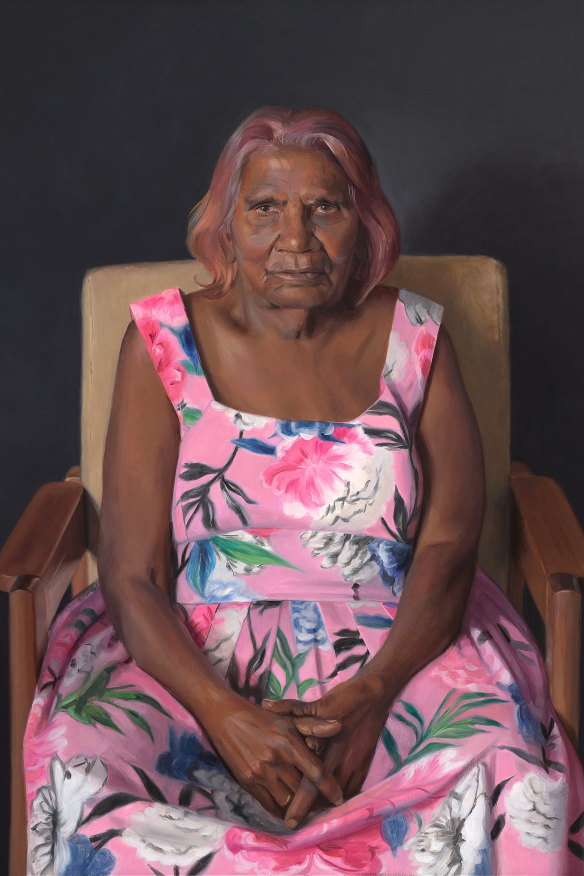
Tsering Hannaford’s portrait of Berry Malcolm titled Nanna Mara.
Marcus Wills’s Jack and Nikki and Alanah Ellen Brand’s Solomon Kammer: never enough may be considered borderline cases. The style of painting is naturalistic, the sitters are anything but flamboyant, but one recognises the artistic “type”. One could say the same about John Hillier’s There’s Something About Harry, even though the subject is a boxer.
Another set of realistic works – Judith Sinnamon’s Katherine Murphy, Randall Sinnamon’s Portrait of Joseph Tawadros and Clare Thackaway’s Lottie - make great play with colour, which becomes just as important as the sitter. These are attractive pictures but none of them feel like contenders. Will Mackinnon’s portrait of fellow artist Richard Lewer is another lively piece that lacks that touch of gravitas one looks for in a winner.
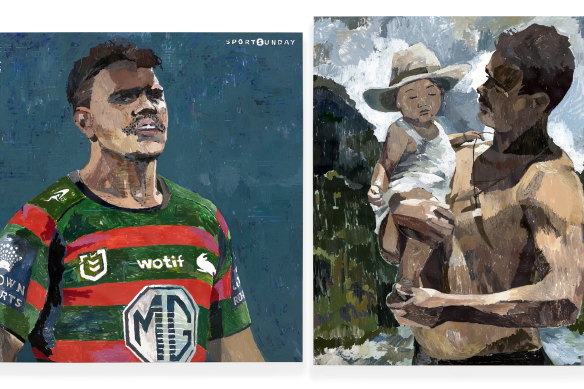
Zoe Young’s double portrait of Rabbitohs’ star Latrell Mitchell titled Latrell and Winmarra’,
One needs to be bold, or at least reckless, to submit a large painting to the Archibald, as it has become obvious over the past few years that small works have the best chance of being hung. Zoe Young must have been feeling confident when she sent a double portrait of Rabbitohs star, Latrell Mitchell. In the left-hand panel of Latrell and Winmarra we see Mitchell in his footy gear. In the other, slightly taller panel, he’s holding his small child. Young has had an each-way bet and the trustees have indulged her, most probably because of Mitchell’s star power. It wouldn’t have been the same had she painted someone from reserve grade. I can’t see it winning the comp, but maybe one of those wealthy Rabbitohs tragics will take an interest.
Anh Do’s portrait of the late Archie Roach, Seeing Ruby, is another work that probably owes its inclusion to the subject rather than the skill with which it is painted. A big head against a velvety black background, it’s a hard picture to love, even for diehard Archie Roach fans.
As usual, David Griggs is responsible for the wildest contribution. The Melanoma and the Stitches may sound like a great name for a punk band, but it recounts in lurid shades of pink, mauve and red, a painful experience with a skin cancer. This is one of the few portraits this year in which realism is steamrollered by the expressionist impulse. I’d take it over two works of painstaking photorealism by Matt Adnate and Jaq Grantford that look as if they were painted with the aid of a microscope.
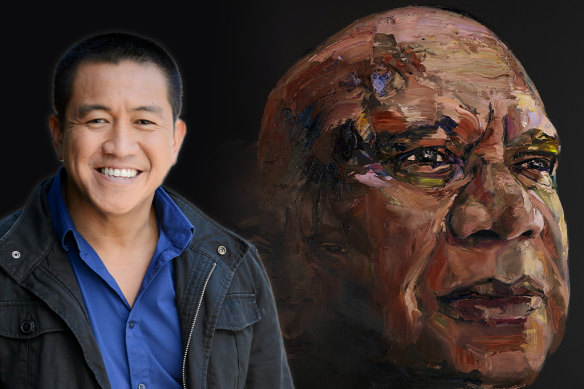
Anh Do and his portrait of the late Archie Roach titled Seeing Ruby.
Many artists are such prisoners of a signature style they must hope they’ll wear the judges down by sheer repetition. A more likely outcome is that a familiar style leads to instant inclusion, year after year, with little chance of winning, until suddenly the trustees say: “You’ve had yer go. Let’s try someone else.”
In the course of writing, this most unpickable Archibald is starting to settle in my mind. If the trustees are conscientious, they’ll see this as a Goldilocks year, when many of the entries are either too weird or too ordinary. What they need is something that’s just right. I’d lay my bets on Marikit Santiago’s Hallowed Be Thy Name – a portrait of the artist and her three kids on gold leaf, framed by an archway surrounded by leafy green jungle.
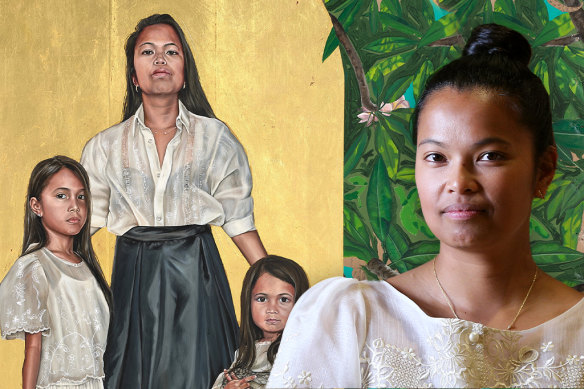
Artist Marikit Santiago and her portrait Hallowed Be Thy Name.
Although Santiago has one of those signature styles, she has the advantage of being a relatively new addition to the ranks. She also has form, after winning the Sulman Prize in 2020 and having been included in the 2021 Archibald.
Santiago’s group portrait, which credits her children as collaborators, is a cross-cultural, cross-generational work that celebrates her origins in the Philippines and her life in Australia, where she was born. There’s a strange humour in the picture, as each of the kids is holding a small version of a deadly Australian animal – octopus, snake and croc. Perhaps it’s a comment on that maternal instinct that sees danger everywhere.
With realistic figures set within a symbolic framework, a dash of religion, a large helping of multiculturalism, a touch of family feeling… this is the work I kept coming back to when I tried to pick a winner. It may be that Tsering Hannaford’s Nanna Mara is actually a better painting but Santiago is less of a square when it comes to mixing genres and themes and laying on strong colour. It’s a readymade icon, and eminently photogenic. I’m also imagining the artist and her family posing for the cameras on the day of the announcement.
So, that’s my bold prediction. If they go in the opposite direction and give it to something like Anh Do’s Archie Roach or Kaylene Whiskey’s cartoonish self-portrait, it will signify a frivolous attitude to an event that already bears a disturbing resemblance to a carnival attraction. It may be that the Archibald will never be replete with masterpieces, but at 102 years old, one would hope the trustees might respect the dignity of age.
The Archibald, Sulman and Wynne prize winners will be announced on Friday, May 5. The exhibitions open at the Art Gallery of NSW on Saturday.
To read more from Spectrum, visit our page here.